How much do we really know about our very own native bees? There are at least 1,700 species of Australian native bees, and no, the honey bees are not native in Australia.
They are the European honey bees (Apis mellifera) which were introduced in Australia around the 1800’s. They were introduced as most native bee species do not produce honey. 11 of the social bees do make and produce a type of honey called Sugarbag. This type of honey is delicious, with a tangy flavour that is stored like bunches of grapes. It is not usually recommended to harvest sugarbags as the bees that make them can only produce enough for them to survive, especially in cooler areas. However, in warmer areas, some special techniques can be used that can make it possible.
Most of the native bees are solitary, which means they do not have queens and workers. Instead, a female bee mates with a male and builds her own nests for her eggs. Further, we’ll discuss some of the popular ones in detail!
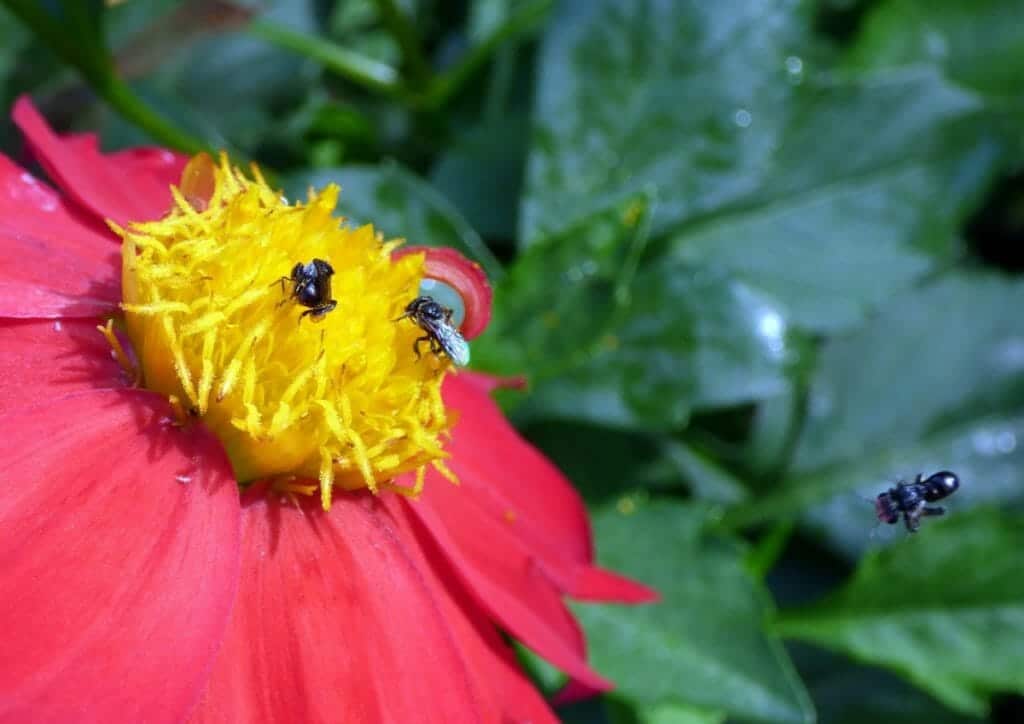
Stingless Social Bee
The tiny black bees are divided into two types: Tetragonula and Austroplebeia. These species belong to the family Apidae and are commonly found in warm areas in the north and east Australia. These bees live in colonies, with one queen and thousands of workers and usually lives in a hollow tree. As the name suggests, they do not sting although they can give you a bite with their little jaws. The stingless bees are the only native bees that can make and store quantities of honey.
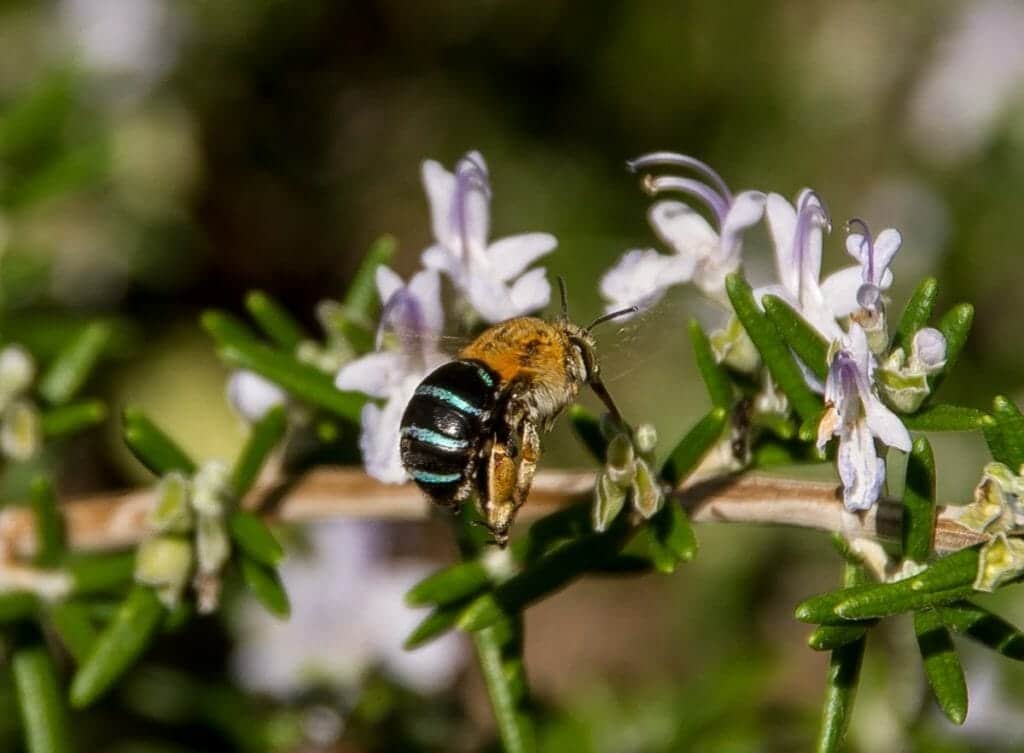
Blue Banded Bee
One of the most beautiful bee species that Australia boasts, the blue banded bee is about 11 mm long and have metallic blue stripes across their abdomens. These bees are solitary bees, which means that each female mates and builds her own nest for her eggs. Males can be distinguished from females by the number of their stripes – males have five while females have four. They usually build their nests in a shallow burrow in clay soil or mudbricks. Many of them build nests in the same spot, much like building a neighbourhood.
Blue banded bees are one of the few native species that pollinates through buzz pollination. This type of pollination is significant for some crops such as tomatoes, blueberries, cranberries, kiwi fruit, eggplants and chillies, which makes them valuable for farmers.
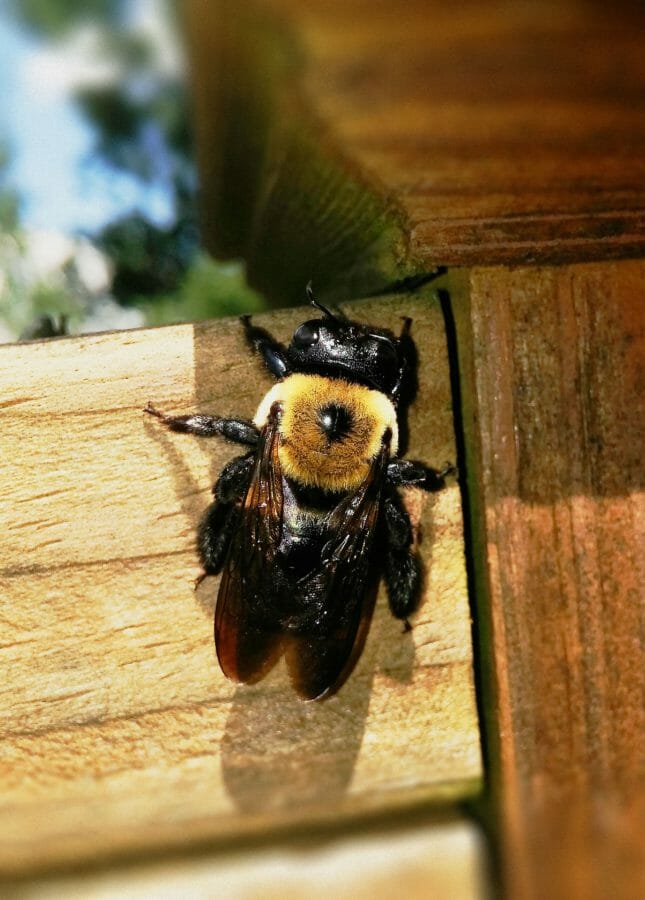
Great Carpenter Bee
The Great Carpenter Bee is the largest species of bees in Australia. This gentle giant is more than double the size of a bumblebee. Why are they called carpenter bees? In fact, it is because of its behaviour of making tunnels in rotting wood, chewing holes with its jaws. They build these tunnels as nests for them to lay eggs. Meanwhile, male carpenter bees guard their territory and attack any other male that comes close. Despite its size, it is usually harmless. These bees are one of the native species that can buzz pollinate.
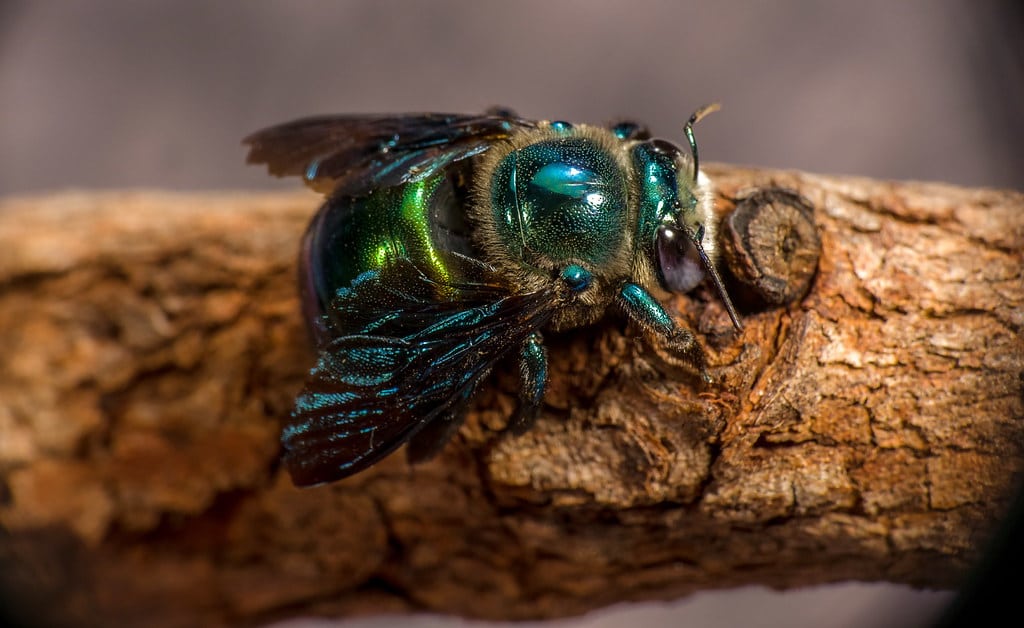
Green Carpenter Bee
Native in southern Australia, it is believed that most of this species have been victims of the mega bushfires in Kangaroo Island, possibly making them critically endangered. While it once populated in NSW, it is now only found on the western area of Kangaroo Island.
A solitary bee that nests in dead Banksia trunks and dead grass tree stalks. Due to buzz pollination, they are important pollinators of native plants such as guinea-flowers, velvet bushes, fringe, chocolate and flax lilies. Because of bushfires, most Banksia tress has burnt and takes over 30 years to regrow. This means that the bee’s main habitat is destroyed and needs the right condition for them to nest.
There are initiatives put place by Wheen Bee Foundation where they have set out artificial nesting stalks for the bees to temporarily nest in.
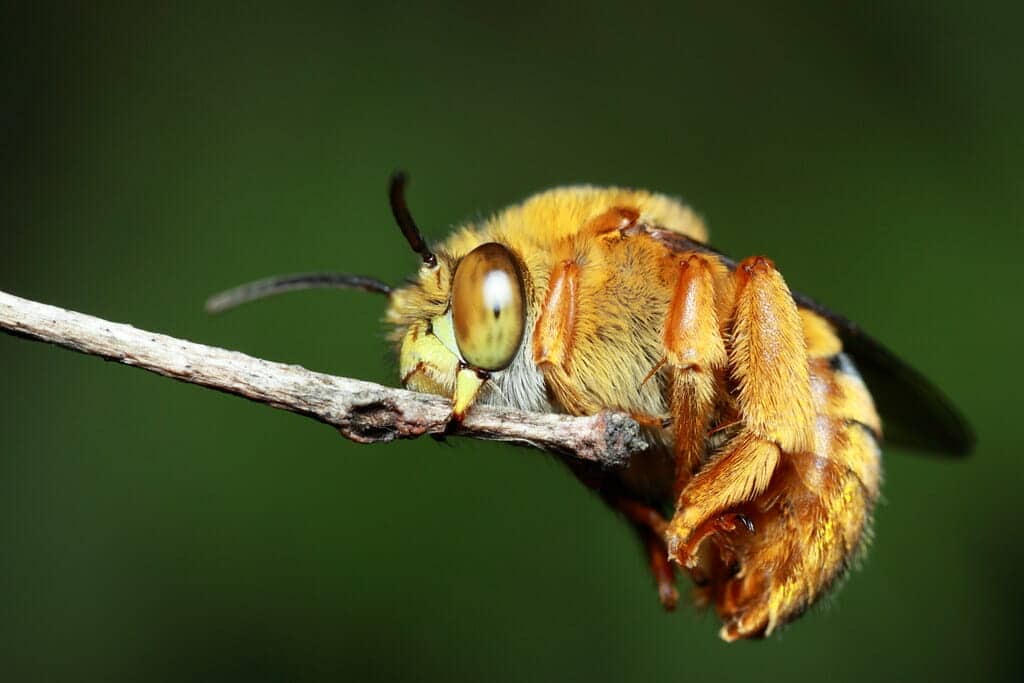
Teddy Bear Bee
These cute, charming chubby bees are solitary bees. They get their name from the thick red-brown fur on their body. They live all across Australia except for Tasmania. Each female builds an individual nest for herself in a small burrow in the soil. However, quite a few Teddy bear bees may build nests close together in a sheltered location such as in an eroded creek bank or underneath a house.
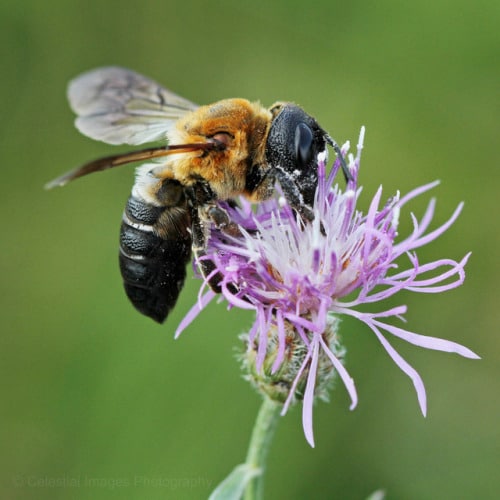
Resin bee
These bees are relatively small, about 7 or 8mm and love to collect resin, hence the name. They build their nests with resin. They are found Australia-wide and are common residents of bee hotels. They build nests in narrow holes in timber or on narrow crevices on other materials and seals the nest off with resin that they have collected. Like the Leafcutter Bee, they carry pollen on arrays of stiff bristles under their abdomen
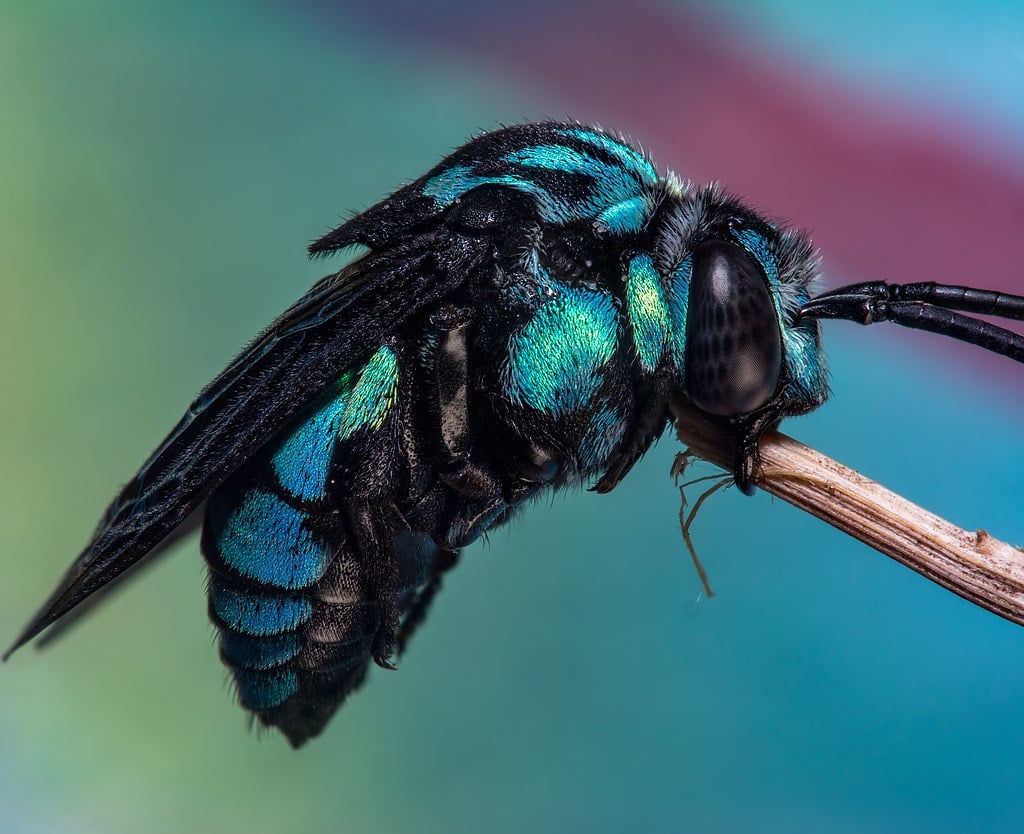
Cuckoo Bee
This beauty comes in a range of different colours. Cuckoo bees live mostly on urban areas, forests, woodlands and heath throughout Australia. These bees do not build their own nests, instead, they lay their eggs in other bees’ nests. Usually, they will stalk other bees’ nests, commonly the blue banded bees, and then sneaks in during the construction of the cell intended for the owner’s egg.
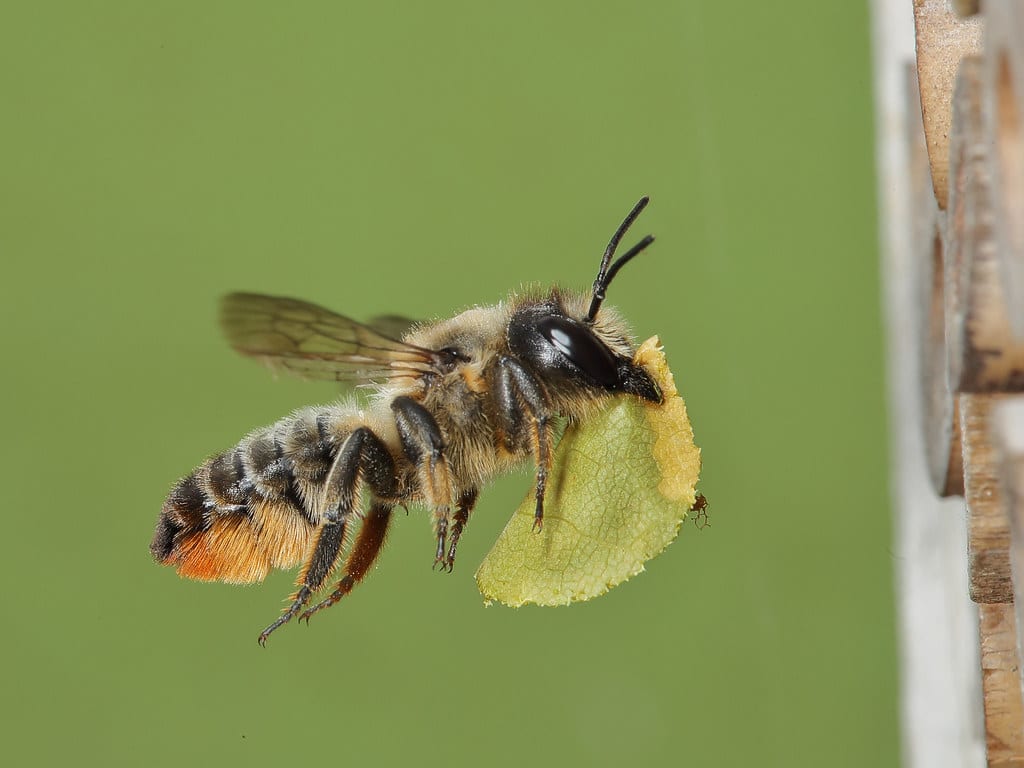
Leafcutter Bee
Do you see neat circles cut from leaves on your garden? These fine artists create amazing handwork. They get their name as they literally cut a neat circle or oval from a leaf. Another solitary bee, they use the leaf pieces for her nest, used as a tiny cradle for her eggs inside her nest burrow. They use different spaces to nest such as holes in timber, hollow stems, gaps in doors or window frames, rock walls and outdoor furniture. In the nest, they weave the pieces into cylindrical brood cell where the egg will hatch. Unlike the honey bees, these bees carry pollen on arrays of stiff bristles under their abdomen.
You can attract leafcutter bees by planting a diverse range of native leafy plants, creating small rock walls and consider constructing a small native bee wall or bee hotel.
Interested in buying beekeeping tools and equipment in bulk and discounted price? For personalised advice on products and tips for beehive management, give us a call on 0488 010 840 or get in touch via email at [email protected]. Shop online here (free shipping for orders over $300)!




